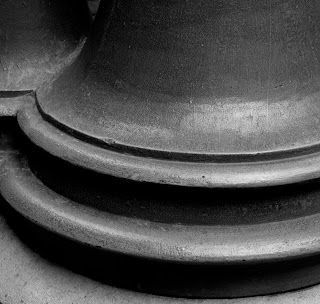The building itself is a fine example of Victorian architecture in the gothic style, and is packed with many items of natural history as well as man made artefacts in the annex. Coming from a rural environment, the opportunity to photograph in this different setting presented a fresh challenge.
Rather than rigidly follow the exercises in the coursenotes, I had in mind the exercises listed in Part 2 and captured images in a more flexible style. I think this helped, both to make me relax as a photographer, as well as looking ahead to some of the assignments where its important to combine the skills learned to produce a body of work.
So here goes....
These first three images are on the subject of curves and circles. Not so imaginative but helped to 'get my eye in' when shooting. I was careful to use diagonals and the rule of thirds to guide the eye.
 Hope you see the funny side of this - all these eminent scientists carved as statues, then this guy, carved as a bust only. Perhaps his contribution was somehow less than the others, perhaps a comment on the scientific establishment? Photographically it combines the main subject, highlighted in the foreground, with the others in a receding diagonal further back. I could have cropped the image tighter at the top but felt this extra headroom would better emphasise the shortness of the figure in the foreground.
Hope you see the funny side of this - all these eminent scientists carved as statues, then this guy, carved as a bust only. Perhaps his contribution was somehow less than the others, perhaps a comment on the scientific establishment? Photographically it combines the main subject, highlighted in the foreground, with the others in a receding diagonal further back. I could have cropped the image tighter at the top but felt this extra headroom would better emphasise the shortness of the figure in the foreground.



No comments:
Post a Comment